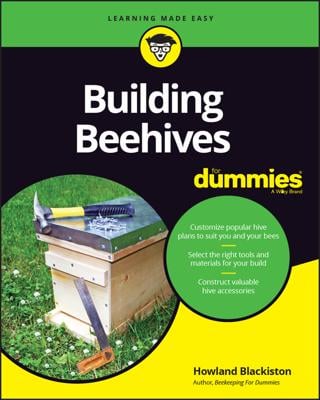You can choose from many different races and hybrids of honey bees. Each strain has its own pluses and minuses. The following list acquaints you with some of the more common types of bees. Most of these types are readily available from bee suppliers. Some suppliers even specialize in particular breeds, so shop around to find what you want.
Italian (A. m. ligustica): These honey bees are yellow-brown in color with distinct dark bands. They are good comb producers, and the large brood that Italian bees produce results in quick colony growth. They maintain a big winter colony, however, which requires large stores of food.
Carniolan (A. m. carnica): These bees are dark in color with broad gray bands. This type exhibits a strong tendency to swarm. Carniolans maintain a small winter colony, which requires only small stores of food.
Caucasian (A. m. caucasica): Caucasian bees are mostly gray in color and are extremely adaptable to harsh weather conditions. They make extensive use of propolis to chink-up drafty openings, which can make quite a sticky challenge for the beekeeper. Caucasian bees also are prone to robbing honey, which can create a rather chaotic beeyard.
Buckfast (hybrid): The Buckfast bee was the creation of Brother Adam, a Benedictine monk at Buckfast Abby in the United Kingdom. Brother Adam earned a well-deserved reputation as one of the most knowledgeable bee breeders in the world. The Buckfast bee excels at brood rearing, but exhibits a tendency, however, toward robbing and absconding from the hive.
* Russian: The Russian bees seem to be far better at coping with the parasites that have created so much trouble for other strains of bees. These bees have a tendency to curtail brood production when pollen and nectar is in short supply, resulting in a smaller winter colony.
Starline (hybrid): This bee was derived as a hybrid strain of Italians and is the only commercially available hybrid race of Italians. It is regarded as productive at pollinating clover, so some people refer to the Starline as the clover bee.
Midnight (hybrid): The Midnight bee makes heavy use of propolis, which can make inspecting a colony of Midnight bees a sticky challenge for the beekeeper. This bee is a hybrid combination of both the Caucasian and Carniolan races.
Africanized (hybrid): This bee is not commercially available, nor desirable to have. Its presence has become a reality throughout South America, Mexico, and parts of the southern United States. The list of bee races is not complete without a nod to the so-called Killer Bee. This bee’s aggressive behavior makes it difficult and even dangerous to manage.
Generally speaking, the four characteristics that you should consider when picking out the bee strain that you want to raise are gentleness, productivity, disease tolerance, and how well the bees survive winters in cold climates (such as in the northern United States and Canada).
Try the Italian or Russian. No doubt about it. They are both gentle, productive, and do well in many different climates. These are great bees for beginning beekeepers. Look no further in your first year.
At some point in years to come, you may want to try raising your own various races and hybrids of bees. Much is involved in breeding bees. It’s a science that involves a good knowledge of biology, entomology, and genetics. A good way to get your feet wet is to try raising your own queens. It’s a way to retain the desirable characteristics of your favorite colonies.

